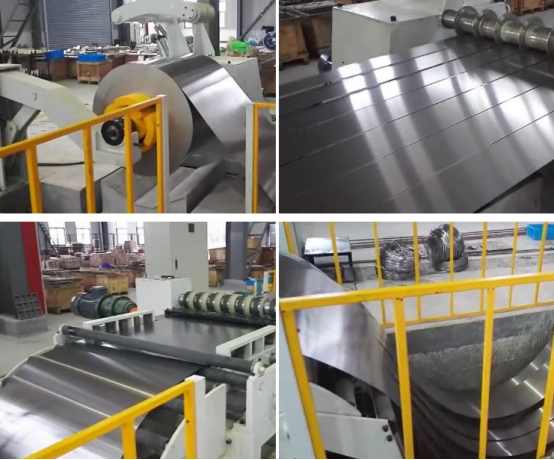
Channel Framing Roll Forming Machine An Overview
In the realm of modern manufacturing, the channel framing roll forming machine stands out as an essential piece of equipment for producing high-quality channel profiles. This specialized machinery is designed to transform metal coils into precisely shaped channel sections that are widely utilized in construction, automotive, and various industrial applications.
Understanding the Role of Channel Framing Roll Forming Machines
At its core, a channel framing roll forming machine works by feeding a flat sheet or coil of metal, typically steel or aluminum, through a series of rollers. These rollers gradually shape the metal into a desired channel profile while maintaining a continuous flow of material. The result is a uniform product that meets specific engineering requirements. The channels produced can vary in size, thickness, and material, catering to the diverse needs of different industries.
Key Components of the Machine
1. Feeding System The initial step involves a feeding system that precisely guides the metal coil into the machine. This system ensures that the material is fed at the correct speed and alignment, which is crucial for maintaining the quality of the final product.
2. Roller Station The heart of the machine is the series of rollers. Each roller is meticulously designed to perform specific shaping functions, bending and forming the metal slowly into the desired profile. Proper adjustment and calibration of these rollers are essential to achieve the exact specifications required.
3. Cut-Off Mechanism Once the channel profile is formed, it needs to be cut to the desired length. The cut-off mechanism is responsible for precisely cutting the product without causing any distortion to the profile. This aspect is vital for maintaining consistent quality across large production runs.

4. Control System Modern channel framing roll forming machines are equipped with advanced control systems that facilitate automation. Operators can easily set parameters for production runs, including speed, length, and profile adjustments. This automation not only enhances efficiency but also reduces the likelihood of human error.
Applications of Channel Profiles
The channel profiles produced by roll forming machines have numerous applications. They are commonly used in the construction industry for framing structures, supporting walls, and creating brackets. In the automotive sector, these channels are integral components in the construction of vehicles, providing structural integrity and support. Additionally, they are used in manufacturing machinery and equipment, demonstrating their versatility and importance across various fields.
Advantages of Using Roll Forming Technology
One of the primary benefits of using channel framing roll forming machines is the efficiency they bring to the manufacturing process. These machines are capable of producing large quantities of channel sections quickly and with minimal waste. The consistent quality of the profiles produced also means that manufacturers can rely on these components for their structural requirements, minimizing the need for extensive quality control checks.
Moreover, the roll forming process allows for intricate designs and customized profiles, giving manufacturers the flexibility to adapt to changing market demands. As industries continue to evolve, the ability to innovate with new designs is crucial, and roll forming technology provides a competitive edge.
In conclusion, channel framing roll forming machines are indispensable in modern manufacturing. With their ability to produce high-quality, precise channel profiles efficiently, they play a vital role in various industries, contributing to the structural integrity and innovation of products we rely on every day. As technology advances, these machines will likely become even more sophisticated, further enhancing their capabilities and applications.